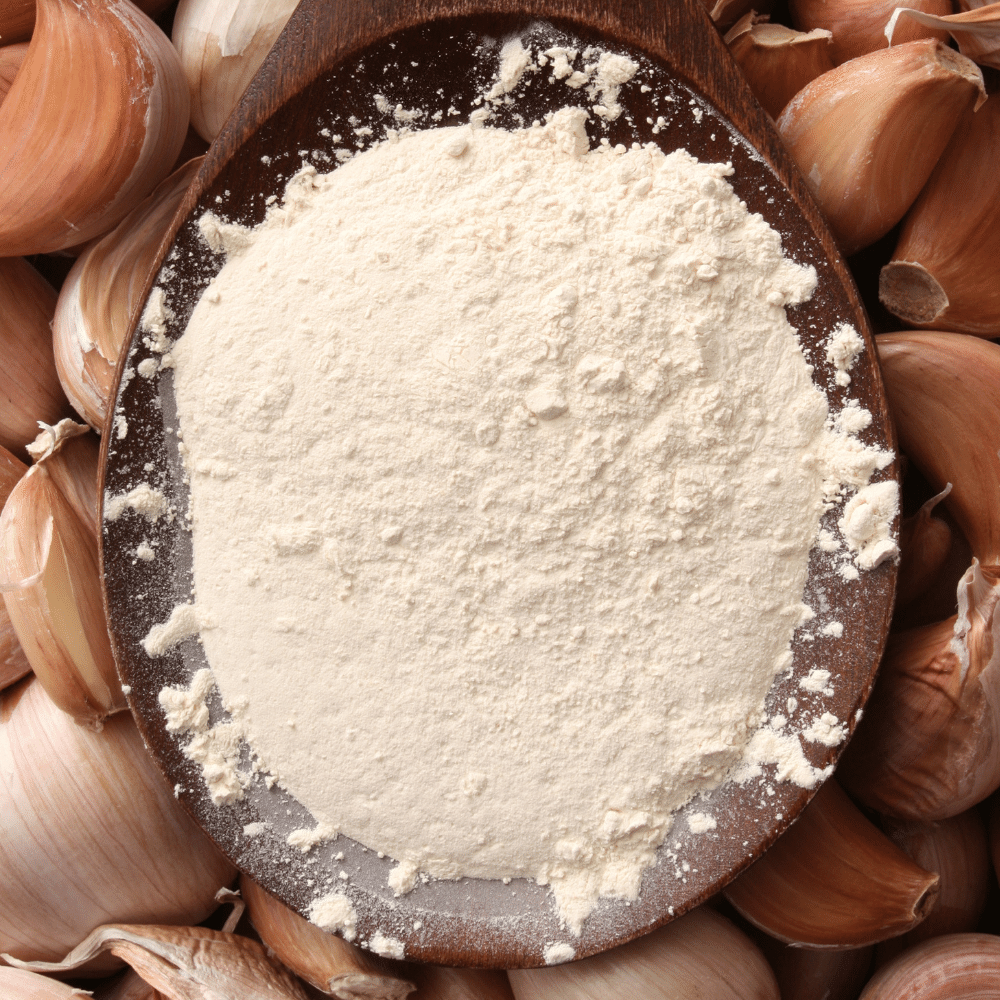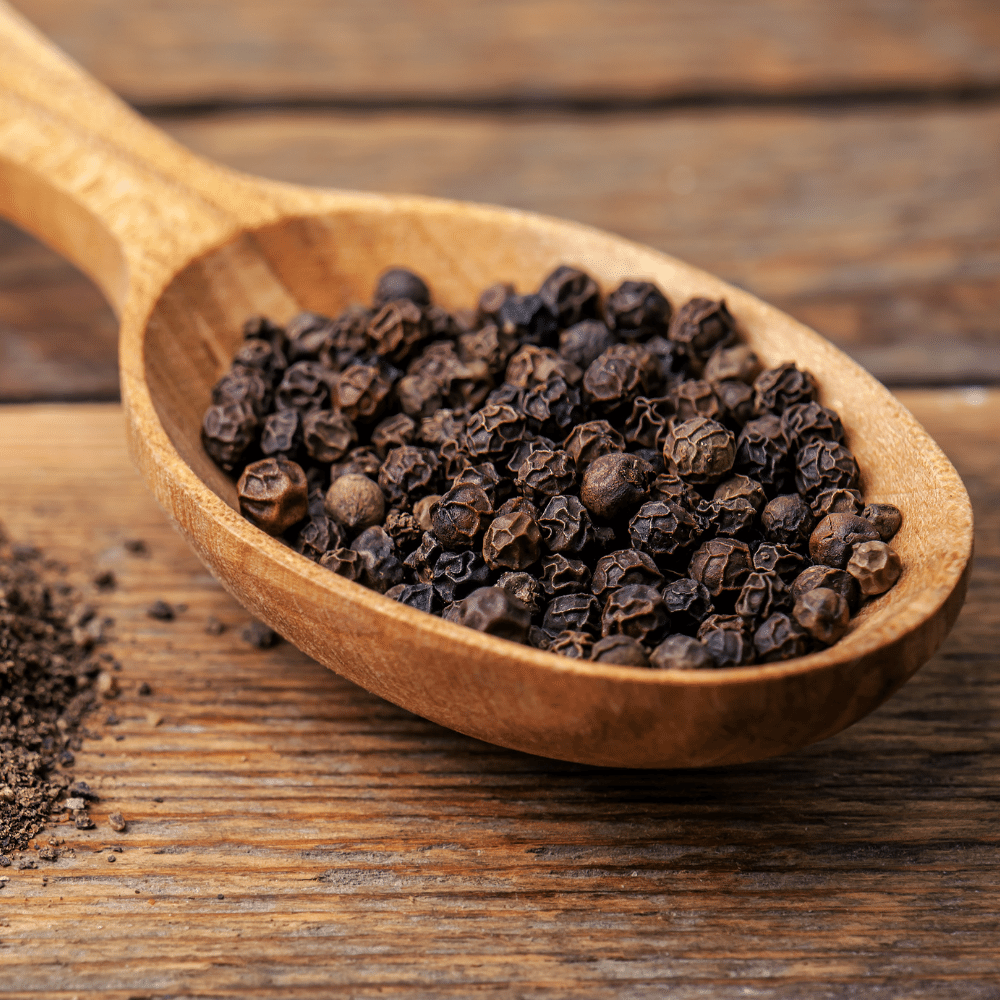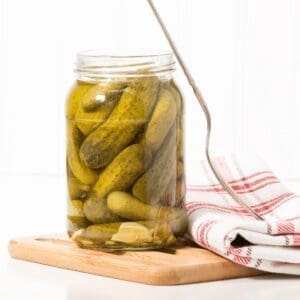Do you love the flavor of dill pickles?
Whether it’s a crunchy snack or an addition to your favorite sandwich, there’s nothing like the unique taste of dill.
But what if you want to give your homemade pickles a little something extra?
Herbs and spices are a great way to add some variety and complexity to your pickles.
In this article, I will discuss 8 herbs and spices that work particularly well with dill pickles.
From classic combinations like garlic and onion powder to more adventurous flavors like turmeric and cardamom, these seasonings can take your pickle game up a notch!
What Are Dill Pickles?

Dill pickles are cucumbers that have been preserved in a brine solution of vinegar, water, salt, and dill.
The combination of these ingredients creates a sour flavor with hints of sweetness and spice.
Dill pickles can be eaten as-is or used to add flavor to sandwiches, salads, burgers, and other dishes.
The process for making dill pickles begins by selecting the freshest cucumbers available.
These are then washed thoroughly before being placed into jars along with fresh dill sprigs and garlic cloves.
A brine solution is then prepared using white vinegar, water, sugar (or honey), salt, peppercorns (optional), mustard seeds (optional) and red pepper flakes (optional).
This mixture is heated until the sugar has dissolved before it is poured over the cucumbers in the jar.
The jar is sealed tightly and left at room temperature for several days so that the flavors can develop fully before refrigerating them for up to two months.
Dill pickles make an excellent snack on their own or they can be used as an ingredient in many recipes such as potato salad or tuna salad sandwiches.
They also pair well with cheese slices on crackers or added to hamburgers for extra crunchy texture and flavor!
8 Best Herbs and Spices for Dill Pickles
If you’re looking to make homemade dill pickles, the right combination of herbs and spices is essential.
Here are eight herbs and spices that will add a unique flavor to your pickles:
1. Dill

Dill is an herb that belongs to the same family as parsley, celery, and carrots.
It has a unique flavor that is both sweet and savory with hints of citrus.
The leaves are feathery and delicate in texture while the seeds have a more intense flavor.
Both the leaves and seeds can be used for cooking, but they should be added at different times during the cooking process to get the most out of their flavors.
- How Much To Use: When making dill pickles, you’ll want to use about 1 tablespoon of fresh dill per quart jar or 2 tablespoons if using dried dill weed. If you’re adding it to other dishes like soups or salads, start with 1 teaspoon of fresh dill or ½ teaspoon of dried dill weed per serving. You can always add more if needed after tasting your dish.
- Other Common Uses: Dill is often used in Mediterranean cuisine such as Greek tzatziki sauce and Middle Eastern hummus; it’s also popular in Scandinavian dishes like gravlax (cured salmon) and Swedish meatballs. It pairs well with fish, potatoes, eggs, cucumbers, tomatoes, yogurt-based sauces/dressings, soups/stews/chowders, vegetable dishes like roasted Brussels sprouts or green beans almondine; it’s even great on sandwiches!
2. Garlic Powder

Garlic powder is a seasoning made from dehydrated garlic that has been ground into a fine powder.
It can be used as an alternative to fresh garlic in recipes and adds a milder, more subtle flavor than fresh garlic.
- How Much To Use: When using garlic powder in place of fresh garlic, use 1/8 teaspoon of garlic powder for every clove of fresh garlic called for in the recipe. You can also adjust the amount depending on your taste preferences; if you like a stronger garlicky flavor, add more!
- Other Common Uses: Garlic powder is not just for pickles! It’s also great for adding flavor to soups, stews, sauces, marinades, dressings and rubs. It’s also delicious sprinkled over roasted vegetables or added to popcorn seasonings.
3. Mustard Seeds

All parts of the mustard plant are edible, including the seeds, leaves, and flowers; it is in the same genus as cabbage and turnips and is an annual plant.
There are over 40 different varieties of mustard plants, but three are the most popular for culinary use; black, brown, and white mustard seeds typically go into recipes and making mustard.
All three varieties are found in the U.S. as well as other parts of the world.
- When making dill pickles with mustard seed, you should use about 1 teaspoon per quart jar of pickles. The flavor will be subtle but adds a nice depth to your pickles that you won’t get from just using dill alone. You can also add other spices such as coriander or celery seed to give your pickles more complexity if desired.
- Mustard Seeds have many other uses beyond just adding flavor to pickles; they can be used whole or ground up in a variety of dishes such as curries, stews, salads, dressings and marinades for meats or vegetables. They can also be used to make homemade mustards by grinding them up with vinegar or water until they form a paste-like consistency before adding additional seasonings like garlic powder or honey for extra flavor.
4. Coriander

Coriander is an herb that comes from the same plant as cilantro.
It’s a member of the parsley family and has a mild, lemony flavor.
The seeds are used in cooking, while the leaves are often used as a garnish or to add flavor to salads and other dishes.
- How Much To Use: When using coriander for pickling, you should use about 1 tablespoon of ground coriander per quart of brine. This will give your pickles a nice dill-like flavor without overpowering them. You can also use whole coriander seeds if you prefer; just make sure to crush them slightly before adding them to your brine so they release their flavor more easily.
- Other Common Uses: In addition to being used in pickling, coriander is also commonly used in curries and other Indian dishes, as well as Mexican cuisine such as tacos and enchiladas. It’s also popularly added to soups, stews, marinades, dressings, sauces, and rubs for meats like chicken or pork chops.
5. Black Peppercorns

Black peppercorns are the dried, unripe fruit of a flowering vine in the Piperaceae family.
They are native to India and have been used as a spice for thousands of years.
The flavor is pungent and slightly spicy, with a hint of sweetness.
- When making dill pickles, black peppercorns can be added to give them an extra kick of flavor. Use about 1 teaspoon per quart jar or 2 teaspoons per gallon jar when making your pickles. You can also add other spices such as mustard seed, coriander seed, red pepper flakes, or bay leaves for additional flavor.
- Black peppercorns are also commonly used in many dishes around the world including curries, soups, stews, marinades and rubs for meat and vegetables. They pair well with garlic and onions so they’re often found together in recipes like these. Additionally they can be used to make homemade pepper sauces or sprinkled on top of salads or eggs for extra flavor.
6. Fennel Seeds

Fennel seeds are the dried fruit of the fennel plant, an herb in the carrot family.
The seeds have a sweet, licorice-like flavor and aroma that is often used to season dishes like fish, salads, and soups.
Fennel seed has been used for centuries as a medicinal herb to treat digestive issues such as gas and bloating.
- When making dill pickles, you can add fennel seeds for extra flavor. You only need about 1 teaspoon of fennel seeds per quart of pickles; any more than that will overpower the other flavors in your recipe. If you’re using fresh dill instead of dried dill weed, you may want to reduce the amount of fennel seed accordingly since fresh herbs tend to be more potent than their dried counterparts.
- Other Common Uses: In addition to being used in pickling recipes, fennel seed is also commonly used in Italian sausages and breads such as focaccia or ciabatta. It’s also popularly added to curries and stews for its unique flavor profile. Fennel seed can also be ground into a powder and added to rubs or marinades for meats or vegetables before cooking them on the grill or stovetop.
7. Onion Powder

Onion powder is a seasoning made from dried, ground onions.
It has a strong onion flavor and aroma, and it can be used to add flavor to many dishes without the hassle of chopping or slicing fresh onions.
- How Much To Use: When using onion powder in pickles, start with 1 teaspoon per quart of liquid. Taste the mixture before adding more; you may find that you need more or less depending on your taste preferences. You can also use onion powder in other recipes such as soups, stews, sauces, marinades, rubs for meats and vegetables, salad dressings, dips and spreads. Start with ¼ teaspoon per recipe and adjust as needed.
- Other Common Uses: Onion powder is an easy way to add flavor to any dish without having to chop up fresh onions every time. It’s great for adding depth of flavor to soups and stews or sprinkling over roasted vegetables like potatoes or carrots. You can also use it in marinades for grilled meats like steak or chicken breasts; just mix together some olive oil with garlic powder, onion powder, salt and pepper for a simple but flavorful marinade that will make your meat taste amazing!
8. Red Pepper Flakes

Red pepper flakes are made from dried and crushed red chili peppers.
They have a bright, spicy flavor that can add a kick to any dish.
The heat level of the flakes varies depending on the type of pepper used and how much of it is included in the mix.
- How Much To Use: When adding red pepper flakes to your dill pickles, start with a small amount—about 1/4 teaspoon per quart jar—and adjust as desired. You can always add more if you want more heat but you can’t take it away once it’s added!
- Other Common Uses: Red pepper flakes are often used to season pizza, pasta dishes, soups, stews, salads, and sandwiches. They also make an excellent addition to marinades for grilled meats or vegetables. If you’re looking for something different than traditional Italian seasoning for your next batch of spaghetti sauce or lasagna try adding some red pepper flakes instead!
Conclusion
In conclusion, there are many herbs and spices that can be used to give your dill pickles a unique flavor and aroma.
The best herbs and spices for dill pickles include dill, garlic powder, mustard seeds, coriander, black peppercorns, fennel seeds, onion powder, red pepper flakes, caraway seeds, and celery seed.
Using a combination of these herbs and spices can help to create a delicious and unique flavor that will make your pickles stand out from the rest.
So, the next time you’re making dill pickles, don’t forget to add some of these flavorful and aromatic herbs and spices to give them an extra kick.

8 Best Herbs and Spices for Dill Pickles
Ingredients
- Dill
- Garlic Powder
- Mustard Seeds
- Coriander
- Black Peppercorns
- Fennel Seeds
- Onion Powder
- Red Pepper Flakes
Instructions
- Pick your favorite herbs and spices from this list to pair with your dill pickles.
- Prepare the rest of your recipe, and enjoy!
Jenny has always been passionate about cooking, and she uses her platform to share her joy of food with others. Her recipes are easy to follow, and she loves giving tips and tricks to help others create their own unique culinary creations.

